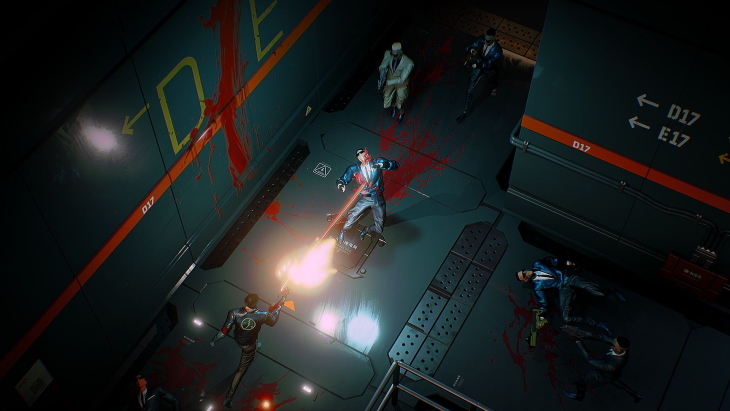
Image: Ruiner official website
Has Cyberpunk 2077 left you feeling burned out? Here’s some of our recommendations for cyberpunk themed games.
The unbelievable hype behind Cyberpunk 2077 made it destined to disappoint many people (including us). While there are those who are able to find enjoyment with CD Projekt Red’s take on the high tech and low life, neon soaked urban nightmare, most were disappointed by the utter lack of quality control.
The launch was so disastrous, that Cyberpunk 2077 got delisted from PSN and refunds were given to digital purchases. Anyone who felt burned by Cyberpunk 2077 may have a void in their heart, still yearning for a quality neon dystopia. Through the ages there have been many games that are deeply inspired by the cyberpunk ethos, and cover a wide range of gameplay genres.
The cyberpunk aesthetic is widely beloved for its coolness. It’s edgy, sexy, and has a rebellious spirit that everyone can relate to. The best cyberpunk settings are traditionally set in a corporate run, grungy and gaudy city dripping with sleaze. This feature will highlight some alternative cyberpunk games that may satiate the craven emptiness left by greatest disappointment of the eight console generation.
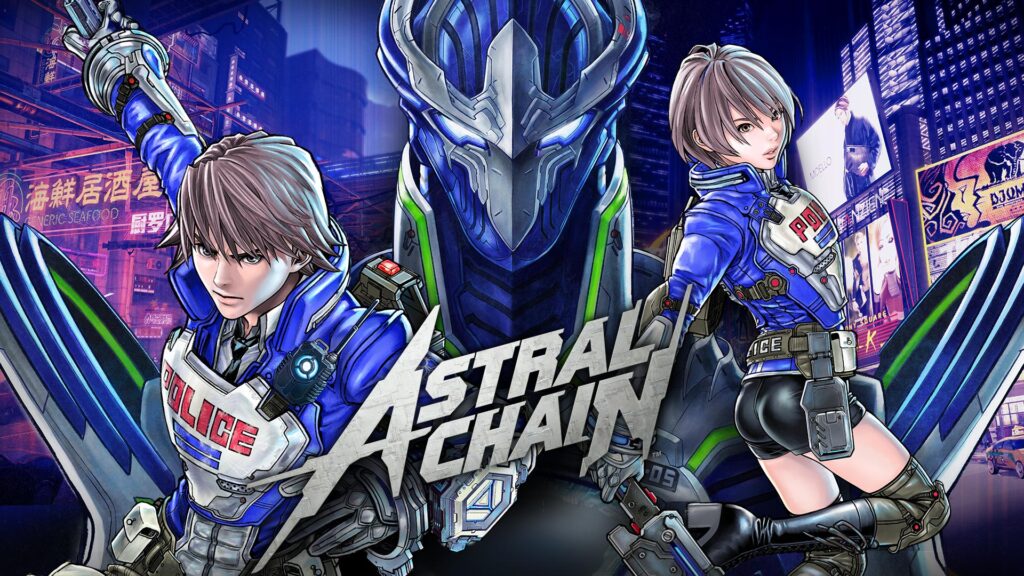
Astral Chain
Developer: PlatinumGames
Publisher: Nintendo
Platforms: Nintendo Switch
Release Date: August 30, 2019
Players: 1-2
Price: $59.99
Beings from beyond the astral plane invaded the world, killing almost all human life. The last vestiges of humanity take shelter in a man-made island known as the Ark, where people are able to live a relatively normal life. To prevent these chimeras from further killing everyone; Neuron, a special police task force, is established to maintain law and order in the city.
Though this is a stylish-action game from PlatinumGames, the speed of the combat has been dialed back a bit from their prior titles. This becomes a benefit, since the core gameplay is designed around controlling two characters; Officer Akira Howard, and their Legion- a tamed astral monster.
Using the characters together while being tethered by a chain functions like a metaphysical hand-cuff to make arrests. It is an innovative and stimulating battle system that is tied to a semi-open city to explore, where players are able to get absorbed in the cyberpunk setting and do some side activities.
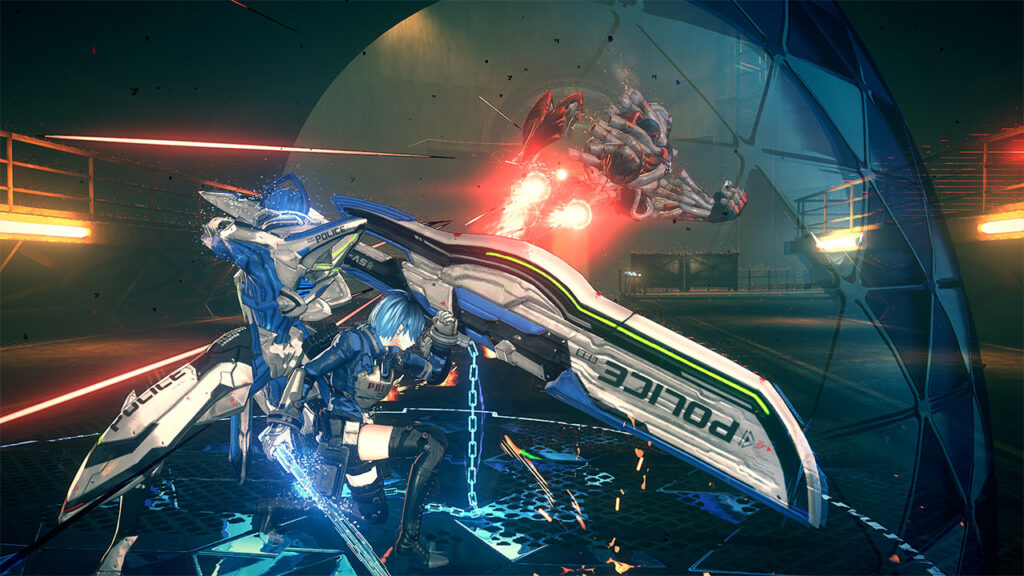
The visual aesthetics take lots of cues from classic cyberpunk themed anime, and has that PlatinumGames’ luster and sheen that they are known for. The graphics almost look like a generation ahead of what the Switch can do, thanks to the deft art direction and flurry of effects that dazzle on the screen.
The intense lighting effects and glistening Technicolor cityscape came at a cost. Sadly, Astral Chain is one of the rare examples of PlatinumGames releasing a 30 frames per second title. This is probably why the speed of the combat was dialed down, so as to allow players enough time to react to some of the brilliant Chimera attacks.
Despite this drawback, Astral Chain still feels very fluid and polished. Unlike some other cyberpunk themed games, it only had a couple of small patches that were no bigger than a few megs. The stylish art direction, customizable protagonist, creative open ended gameplay and colorful cast of characters make this a very engaging experience.

Assuming the role of a super cop of tomorrow is a tried and true theme of the cyberpunk ethos. A dystopian sci-fi metropolis is often at odds with escalated crime or threats, and they must be met with a police force to match with the right firepower.
Astral Chain does an excellent job at making the player feel like they are part of a police force. Between assignments, Officer Howard is free to explore the station and mingle with the supporting cast and to get to know them better. It is a very effective means at world building, excellently draws the user in.
Astral Chain is a Nintendo published game, which means it rarely goes on sale, and when it does it’s only at a pittance. It is one of the more successful PlatinumGame releases, which may give it hope of continuing and further expanding in a sequel. In case you missed it, you can find our full review here (as you may have gathered, we recommend it!)
Images: Nintendo
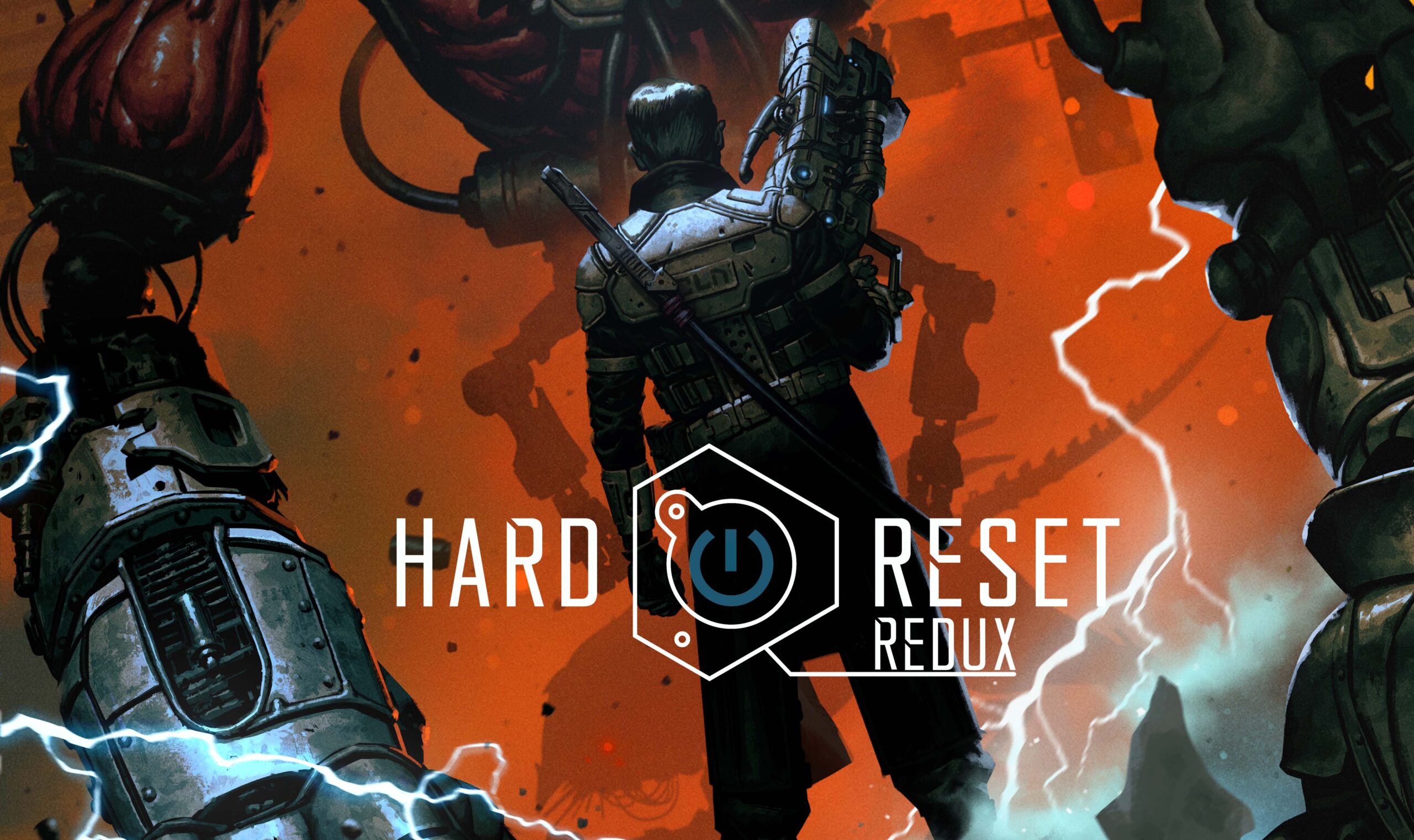
Hard Reset Redux
Developer: Flying Wild Hog
Publisher: Gambitious Digital Entertainment
Platforms: Microsoft Windows, PlayStation 4, Xbox One
Release Date: June 3, 2016
Players: 1
Price: $19.99
Hard Reset: Redux is the quintessential cyberpunk boomer-shooter. The dreary and dilapidated Bladerunner-esque setting will have the player assume the role of Major Fletcher, a decrepit security cyborg. Like most cyberpunk settings, the city it is set in is run by a corporatocracy amidst an uprising of rogue robots.
Fletcher has a really bad time, and an ever worse temper. He gets outfitted two weapons that can transform; some can function like a shotgun, another is like a rocket launcher, and even a plasma rifle. Like a good boomer-shooter, Fletcher never has to reload, and he has to actually pick up his health.
What makes Hard Reset: Redux different from most shooters is how much attention was put into using the environment and the right weapons to smash the robots into shrapnel. There are always the classic means like the obvious explosive barrels, but there are tons of creative and clever methods that involve harnessing electrical arcs or even other robots to explode.
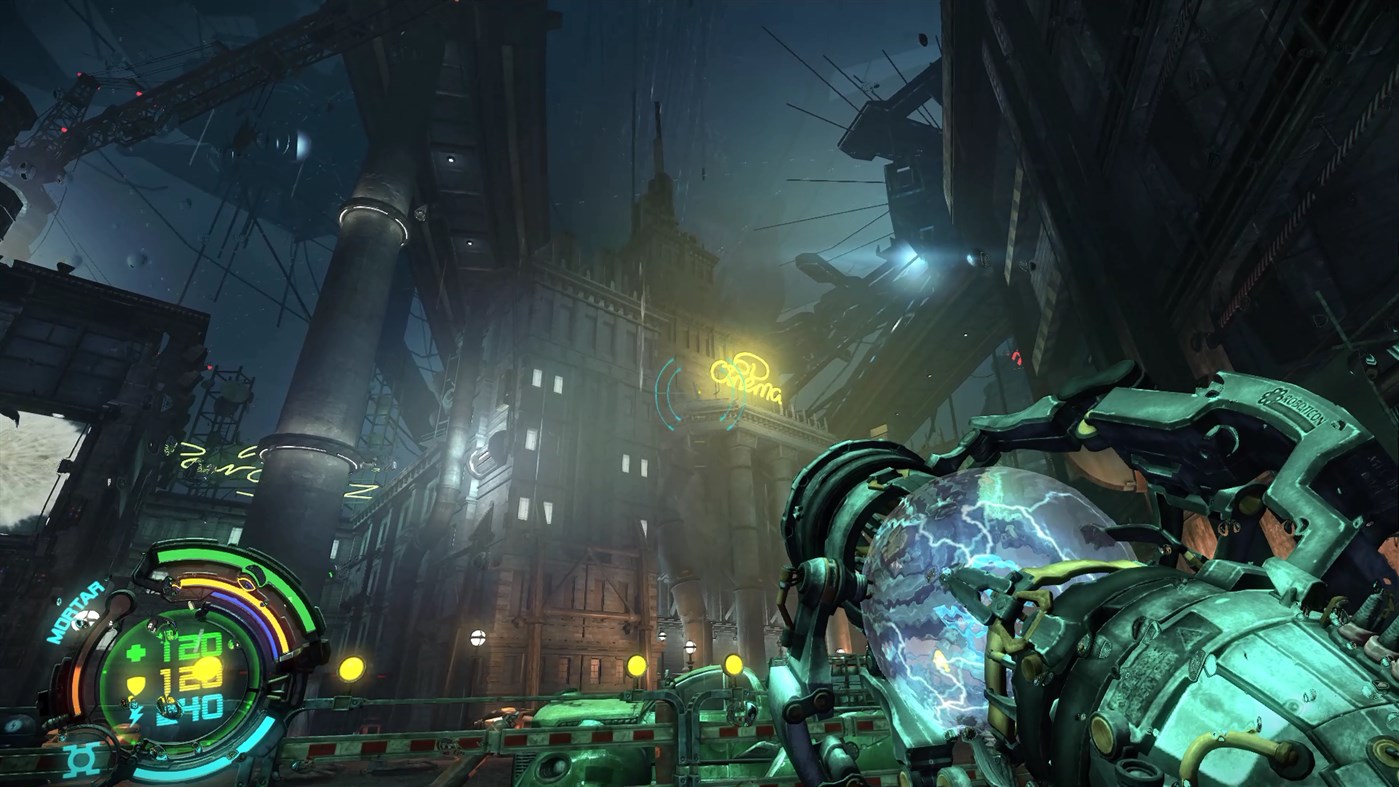
The environments are densely packed with pipes and cables connected to power boxes and computerized terminals. It is like the city is a living thing, and all the mechanisms are like veins and arteries pumping blood into each tenement.
Everything is dank and rusted from the constant rain and heavy moisture in the air. The atmosphere makes your skin feel itchy and oily, making you want to take breaks for a bath. While the story is paper thin, the ambiance and world building makes the city feel like a believable hovel.
Fletcher is not much of a character. He mostly talks in grunts and the budget for cutscenes are nonexistent, since the developers used static pieces of art with voice overs to convey the forgettable story. Other than being an effective first person shooter murder man, he has no definable personality.
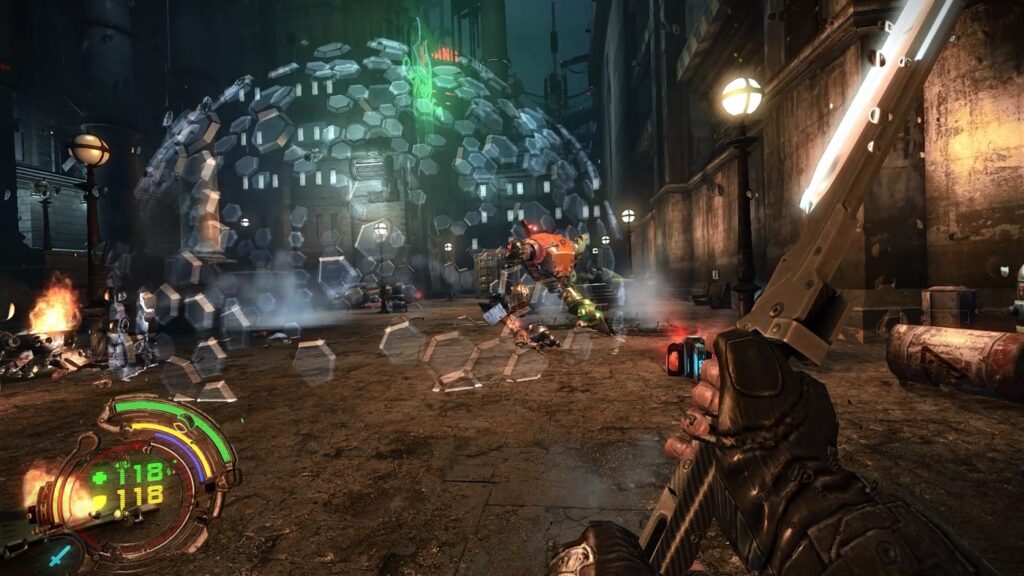
The real reason why anyone would play Hard Reset: Redux is for its stylish visuals and explosive gameplay. Fletcher has tight controls and also can hold his own well with a katana. This is from the same developer of the underrated Shadow Warrior reboot, and they have a solid understanding of satisfying action game mechanics in first person.
Hard Reset: Redux is easily accessible on either PSN or XBLA for console owners. There has never been a Switch version, but it is unlikely the specs of a handheld would be able to process all the physics and volatile environmental elements.
Though it rarely goes on sale, Hard Reset: Redux is a very modestly priced game at $19.99. For that price, players get a short but sweet cyberpunk action game with slick visuals and impressive violence. It is more Cyborg than it is Bladerunner in terms of class, but sometimes Van Damme is more fun than a bored Ford.
Images: Microsoft
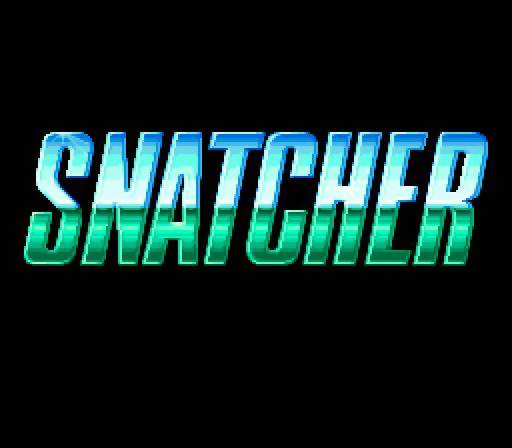
Snatcher
Developer: Konami
Publisher: Konami
Platforms: SEGA CD, PlayStation, Saturn, MSX2, PC-8801, PC Engine
Release Date: November 30, 1994 (USA), November 26, 1988 (Japan)
Players: 1
Price: Variable
When Hideo Kojima was making Metal Gear games on MSX home computers, he struggled to maintain control over the projects he directed. He was not yet an industry icon, and lacked the pull or clout he has today. So he would often be faced with resistance while directing Konami staff to craft his vision.
Frustrated with programmers who would not follow his vision, Kojima would have a game engine built to his specifications. His idea was to create a game with an architecture that would not limit him and would play to his strengths: writing. Snatcher would be a melting pot of cinema that Kojima grew up with, mixed with a manga flair.
Snatcher would be Kojima’s first auteur game. Outside of a few instances of compromise due to a tight deadline, he had almost complete creative control over this. Anyone familiar with Kojima’s recent games will see how he has always been consistent with his agonizing attention to minutia.
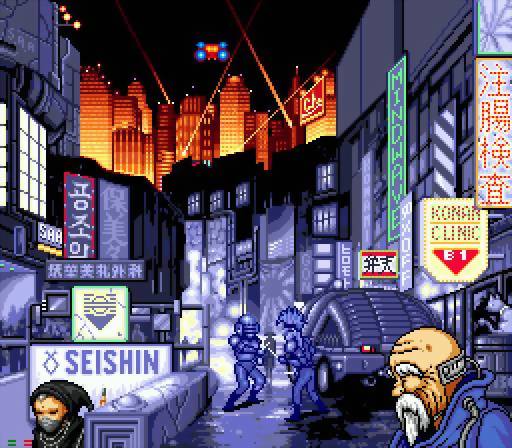
Gillian Seed is a JUNKER, a sort of knock-off of Harrison Ford in Bladerunner. Instead of hunting human-like androids, he faces Terminator-like mechanical life forms who steal the identities of those they kill. As the story progresses, it gradually abandons the heavy movie inspirations and becomes much more like a modern Kojima game.
At its core, Snatcher is a political thriller that revolves around advancing technology and how it can doom everyone. It covers every cyberpunk theme and does it with a stylish manga art style with really good voice acting that holds up today. The jazzy soundtrack is also a highlight that immerses gamers into the ambiance.
The visuals and pixel art are nothing short of classic, and flawlessly capture the “punk” in cyberpunk. There are tons of nods to the art of Syd Mead (Bladerunner production artist), Katsuhiro Otomo (Akira artist), and tons of other cyberpunk pastiche that makes Snatcher one of the most definitive cyberpunk games of all time.

Some gamers may be put off by Snatcher being a visual novel, but the cyberpunk subgenre is probably best represented this way. Cyberpunk’s origins is in literature, and the visual novel format is a brilliant fusion of technology and the written word. Kojima being a video game writer allows him to fill Snatcher with delicious and nutritious flavor text, making the world exist in the mind’s eye of the player.
Snatcher‘s story moves at a brisk pace, and is often open enough to allow anyone to freely examine anything and everything. Gillian is able to do all kinds of actions, which is impressive for a game that is mostly animated pixels and text.
Of all the titles in this feature, Snatcher is regrettably the most difficult to acquire. The English localized version was only released on the SEGA CD, the accursed add-on for the SEGA Genesis/Mega Drive. It fetches absurdly cost prohibitive prices all over the world. Only Japanese speakers can easily enjoy this, since it was included in the PC Engine Mini and Japanese copies for different platforms are common.
Images: GameFAQs
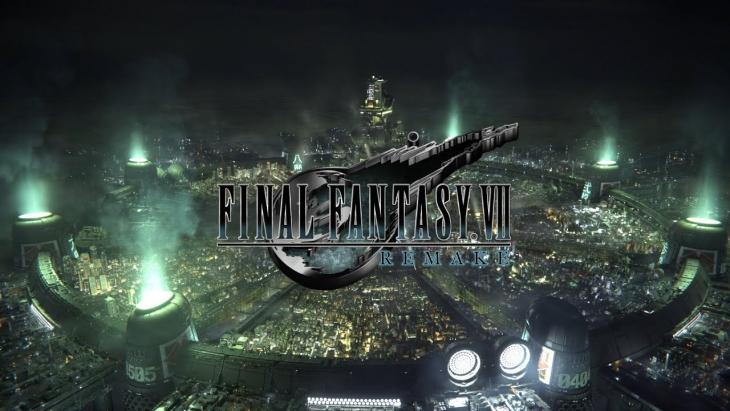
Final Fantasy VII Remake
Developer: Square Enix
Publisher: Square Enix
Platforms: PlayStation 4
Release Date: April 10, 2020
Players: 1
Price: $59.99
Final Fantasy VII has become a sub franchise within Square Enix’s portfolio where it has several games under its label. Between a terrible CGI movie, an OVA, a third person shooter spin-off on PlayStation 2, a prequel on PSP, and a couple of mobile games; more people know Final Fantasy VII from everywhere but the original game.
More than 20 years after the original, Square Enix would release an ambitious remake… sort of. While Final Fantasy VII Remake takes some questionable liberties with the source material and makes a few dubious choices with the scenario, the overall package still remains as one of the more impressive releases of 2020.
As a remake of a beloved classic, it won’t please fans of the original. As a cyberpunk action game, you can only do better with Astral Chain, and that’s because that is a complete story.
Final Fantasy VII Remake has the look and feel of cyberpunk, but with the kind of virtuoso artistry expected from a mega budget title from Square Enix. The team working on this spared no expense. Of all the titles in this feature, this stands tall as the one with the most impressive production values.
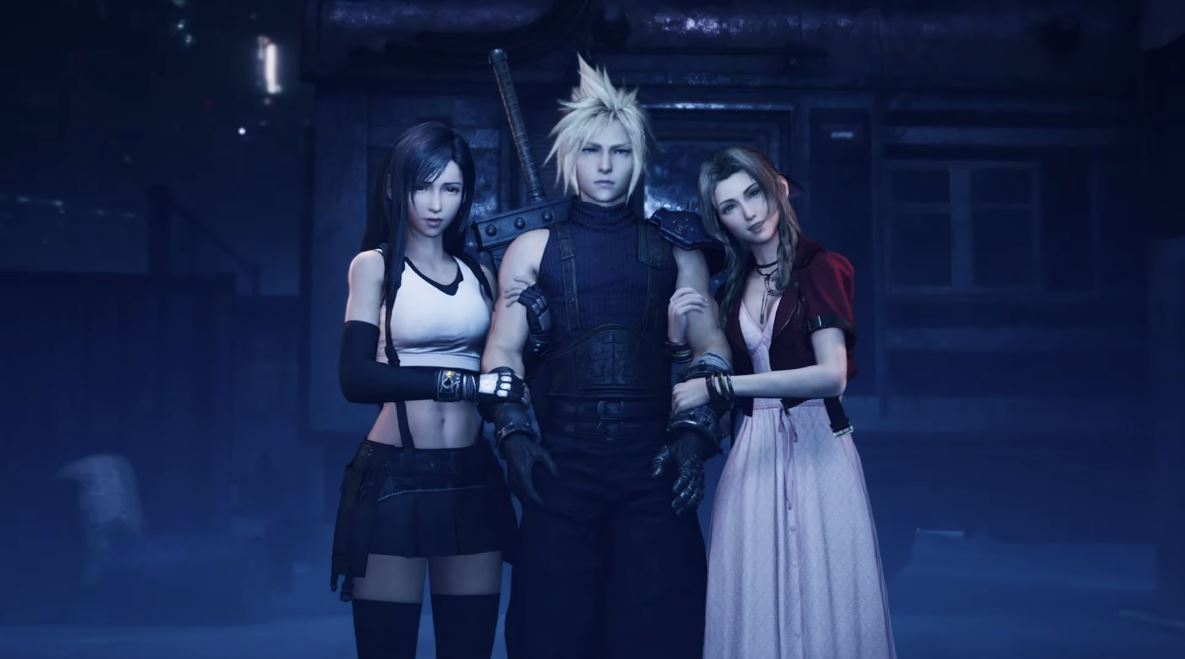
Minor graphical quirks like the odd low resolution texture or a sloppy asset that might show up aren’t enough to detract from Final Fantasy VII Remake‘s ambiance. Midgar is a city within a fusion reactor that draws power from the planet’s life essence, and throughout the urban setting is signs of hard life and sleaze that is the make-up of cyberpunk settings.
The plot centers around a mercenary who is hired by eco-terrorists who want to fight against the corporatocracy known as the Shinra Electric Power Company. From there, protagonists become fugitives and encounter all kinds of scum and corporate shills, all vying for a piece of the Midgar pizza pie. The cast is excellently performed, and the dialogue is some of the best that Square Enix has ever had.
The combat is one of the best aspects of the Final Fantasy VII Remake experience. Square Enix successfully devised an effective battle system that allows players to control multiple characters at once in a brawl. Its unbelievably flexible, and allows for impressive fight sequences with enormous and intimidating bosses.
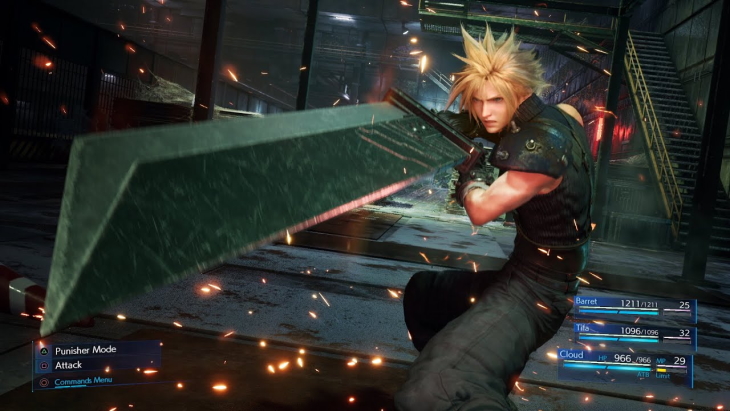
Final Fantasy VII Remake developers made a point early on during its production that this would be episodic, and that the first scenario would be an expansion of the Midgar arc. Why they did this becomes apparent just by looking at the environments, which are meticulously detailed and beautifully rendered. There are a couple of rough spots, but overall there are more times jaws will drop at the visuals.
Midgar is a rugged, industrial urban dystopia. Everything is run by a greedy and corrupt company that brainwashes its employees with dishonest media, and they aren’t above working with a human trafficker. The city is perpetually bathed in darkness and shadows thanks to the upper plate construction which blocks out most sunlight, adding to the moody cyberpunk setting.
The soundtrack easily elevates the Final Fantasy VII Remake experience. Mixing orchestral and other styles like reggae and pop in some areas gives the world a lot of flavor. Sadly, Final Fantasy VII Remake is currently still a PlayStation 4 exclusive, with console exclusivity ending April 4th, 2021. In spite of this, it is also a very polished game with very few bugs and runs very stable.
In case you missed it, you can find our full review here.
Images: Square Enix

Observer: System Redux
Developer: Team Bloober, Anshar Studios
Publisher: Team Bloober S.A.
Platforms: Microsoft Windows, Xbox Series X|S, PlayStation 5
Release Date: November 10, 2020
Players: 1
Price: $29.99
Like many cyberpunk games, Observer: System Redux is inspired by Bladerunner. The impact this film had on the cyberpunk aesthetic has become ubiquitous with the sub genre. It is pretty much a guarantee that anything that has cyberpunk elements in it will be borrowing from the Ridley Scott film. Observer could easily be confused as taking place in the same universe.
Daniel Lazarski (played by the late Rutger Hauer) is an unusual choice for a protagonist for a cyberpunk story, yet is extremely fitting. His late age suggests a society where people can never retire, and end up working themselves into the grave. His job is to dive into the minds of other cyborgs to extract information; this is known as “observing.”
Observing is not as easy as it seems, since the human mind is abstract. An important part of Daniel’s job description is to properly interpret the surreal dying nightmares of these people, but also know how to connect them to crime scenes. This line of detective work is psychologically taxing, and cause many Observers to commit suicide, and resulting in them not being permitted to carry a gun.

Observer plays mostly like a walking-sim. Daniel is an old man, and his gameplay does an excellent job at creating a feeling of being tired all the time. Observer is a slow and boring game. Cyberpunk narratives can often be slow paced, but they should also be engaging or gripping.
Observer is not that interesting. It takes a while for anything to happen, and the dialogue between Daniel and the unseen residents of the apartments where the game is set have some of the worst accents. This is supposed to be set in Poland, but the NPCs all have different American accents and dialects.
The best part of Observer is the unbelievable atmosphere. Observer: System Redux is an Xbox Series X|S and PlayStation 5 game, so it takes advantage of new graphical effects that make it stand out.
The heavy use of smoke and lighting effects make this the most accurate at replicating Bladerunner‘s visual style. When Observing, the visuals become an assault on the senses, and become blinding with brilliant effects.
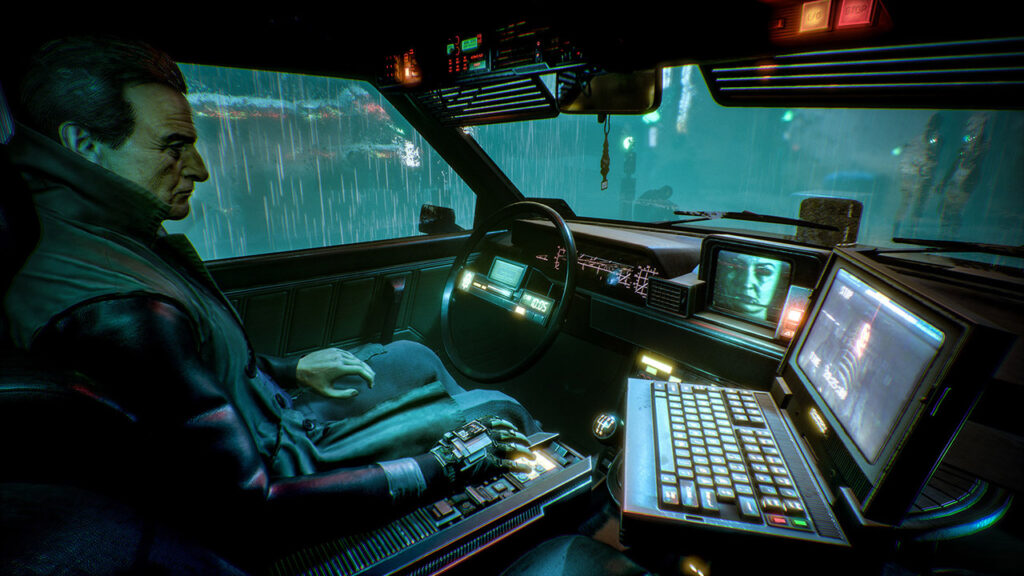
The impressive imagery is almost enough to carry the mediocre gameplay and flawed stealth. Observer: System Redux is better off a demonstration of what Team Blooper’s art team is capable of, or as a screensaver. Fans of Bladerunner will find the atmosphere highly absorbing, and will enjoy exploring the apartment complex.
This may be the weakest title in this feature, but it is also the most advanced. It is style over substance, but the style is legitimately impressively realized. Squinting can make some of the environments look photographic.
Observer: System Redux is only available on PC, Xbox Series X|S, and PlayStation 5. There is a last gen version that is missing some minor gameplay improvements, new content, and the overhauled visuals. The Nintendo Switch version looks the worst and has extra load times that draw out an already slow game.
In case you missed it, you can find our full review here.

Flashback: The Quest for Identity
Developer: Delphine Software International, Tiertex, Chui
Publisher: U.S. Gold, Microids
Platforms: Super Nintendo Entertainment System, SEGA Genesis, SEGA CD, Dreamcast, Atari Jaguar, MS DOS, iOS, Symbian, Amiga, NEC PC-9801, FM Towns, CD-i, Nintendo Switch, PlayStation 4
Release Date: 1992
Players: 1
Price: $9.99 (eShop/PSN)
Flashback: The Quest for Identity is from that golden era of games when the developers were not coy with their influences. Taking elements from classic movies like Total Recall and They Live, Flashback uses a classic cyberpunk aesthetic to convey its scenario.
This was from a time when having cutscenes in a game was cutting edge and novel, and Flashback was able to get conversions on 16-bit consoles while maintaining these scenes. Typically, cutscenes were reserved for games that were on a CD, but Flashback proved it could be done on cartridges. It added a cinematic flair to this style of platformer, which was inherently meant to look movie-like.
Other than a few indie games, there are not many slow paced, step-based platformers anymore. These were very methodical, and deliberately designed with drawn out but detailed character animation. All characters would have very fluid and lifelike movement, and would come at the cost of quick and responsive gameplay. This meant games like this focused on puzzle design over precision or reflexes.

As mentioned earlier, Flashback takes many plot elements from popular Hollywood science fiction from the late 80s, early 90s. Conrad’s story begins with him waking up in some kind of artificial biome, and a bad case of amnesia. He finds a message to himself where he gives his first lead.
Conrad gets wrapped up in a surreal cyberpunk odyssey. From getting caught up in a ridiculous bureaucracy, diffusing bombs, playing in The Running Man-esque bloodsport, to hunting off-brand replicants; Flashback is one of the definitive 16-bit cyberpunk experiences.
For a cinematic platformer, Flashback does have an unusual control scheme. Anyone who thinks they are a pro because they could beat Another World will have to think again, and unlearn what they know when stepping into Conrad’s shoes. Getting acclimated to the controls takes a bit of patience, but upon mastery, things click.
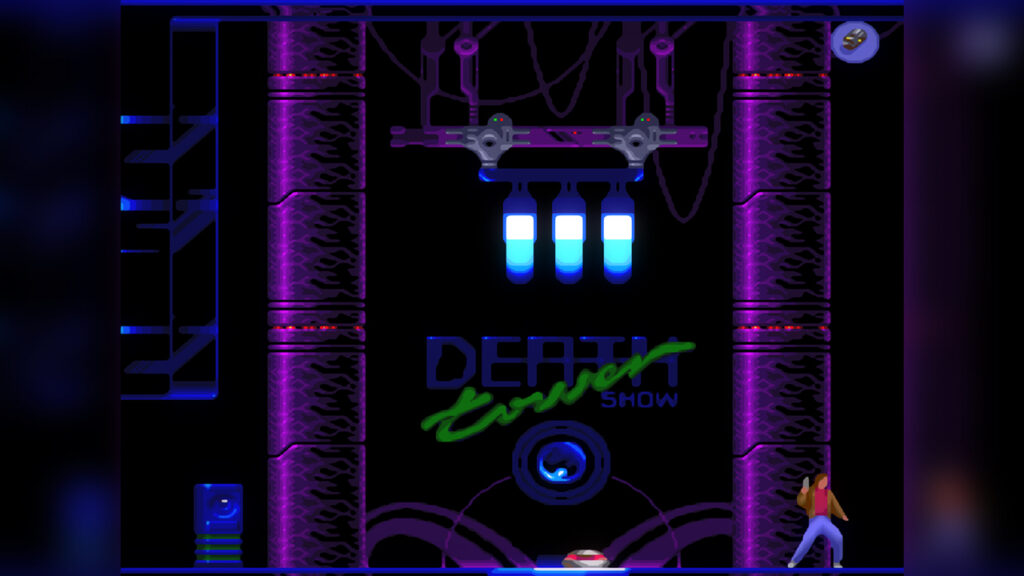
Flashback‘s gameplay mostly revolves around navigating environments that are connected by screens, and finding the right key items for the right situation. Sometimes Conrad will get into a shoot out, but don’t expect Contra style action. The action is slow and drawn out, with weighty animations for both hero and enemy.
The range of unique set-pieces and distinctive early 90s lurid cyberpunk aesthetics make Flashback stand out from other cinematic platformers. There was a modern remake in 2013, but was a tremendous betrayal of the style and feel of what made the original so interesting.
Anyone who is interested in Flashback will have options to play it on either PlayStation 4, or Nintendo Switch. This updated port features many quality of life improvements, as well as ugly filters that should be turned off immediately. It is an excellent way to play this piece of early 90s cyberpunk motley, is modestly priced at $9.99, and goes on sale frequently.
Images: Nintendo
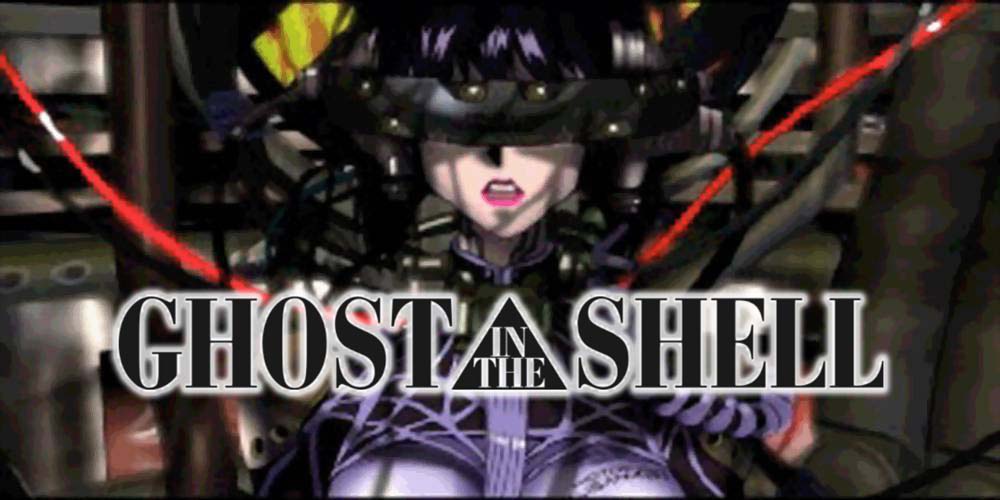
Ghost in the Shell
Developer: Exact
Publisher: THQ, Sony Computer Entertainment
Platforms: PlayStation
Release Date: October 31, 1997
Players: 1
Price: Variable
Ghost in the Shell is the definitive cyberpunk anime and manga. Hearing the word “cyberpunk”, will conjure up some imagery based on Ghost in the Shell. The core themes of existentialism and transhumanism are the heart and soul of cyberpunk. In the center of the scenario is a cyborg police woman who gets involved fighting terrorists and political intrigue.
When most people think of Ghost in the Shell, everyone typically think of the slow burn, philosophical cyberpunk thriller directed by Mamoru Ishii. Before the animated movie, the original manga by Masamune Shirow had a more lighthearted and expressive tone than the dry and serious movie. The film was such a watershed moment in anime, nobody has ever given the source material much attention.
In 1997, Exact would go on to be the only game developer to base their project on the manga’s style and tone. Ghost in the Shell on PlayStation would go on to be a cult classic; thanks to its innovative wall-crawling mechanics, fast action, and memorable anime sequences that capture the spirit of Shirow’s manga.
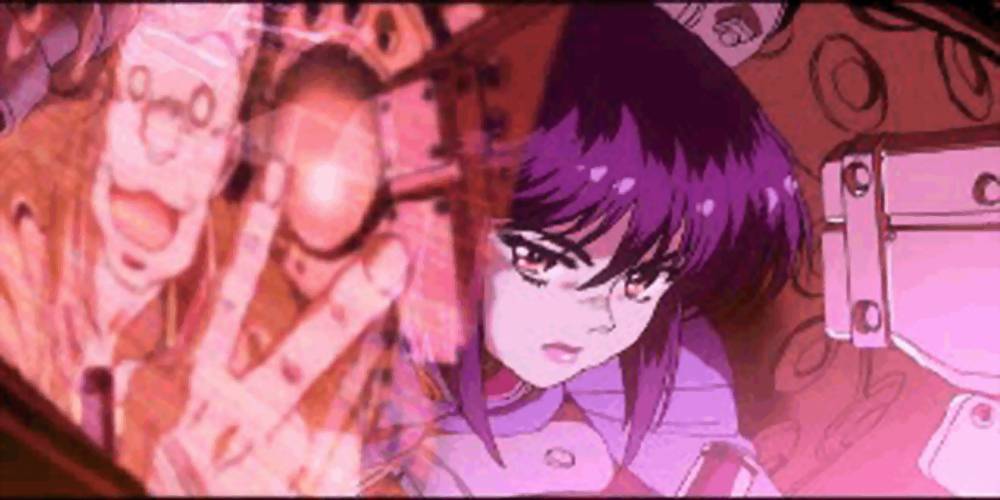
Ghost in the Shell on PlayStation has players assuming the role of an unseen rookie who joins Public Security Section 9. The team is made up of everyone’s favorite Ghost in the Shell characters; Major Kusanagi, Batou, Cheif Aramaki, and even Togusa gets in on the action. Everyone is here and accounted for, and gets superb representation in Studio I.G. produced anime sequences.
Gameplay has the player drive a Fuchikoma, a compact spider-like tank that is highly mobile and can scale almost any surface. Walls and ceilings become vantage points, and Fuchikomas are able to strafe and boost for evasive maneuvers. Fuchikoma’s arsenal includes a machine gun, homing rockets, and grenades with a UI design that has a very pragmatic, military aesthetic.
Ghost in the Shell is a pretty easy game, mostly because the Fuchikoma is extremely effective in combat, and enemies don’t stand a chance against their weapons. While it is also very short, the action is stimulating and the cutscenes are entertaining which make it fun to replay.
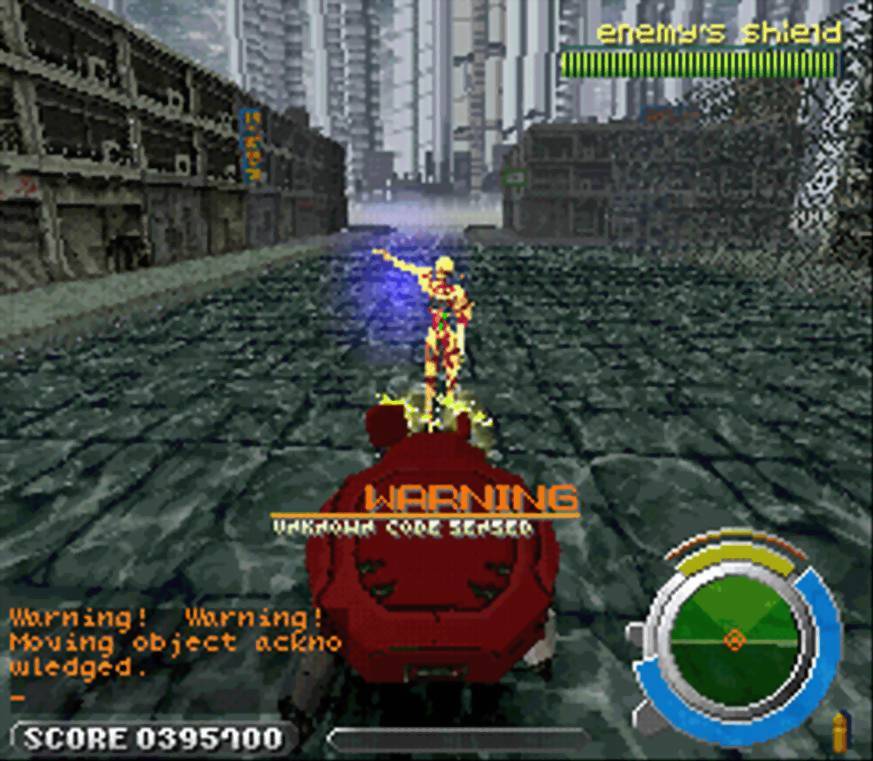
The visuals hold up despite being an early 3D game on PlayStation. The low poly models work wonders for boxy sci-fi military vehicles and tanks. Some areas look sparse and crude, specifically the buildings which look very plain. The chunky PlayStation textures are an aesthetic that lend themselves well to the cyberpunk visual style.
The varied techno music drives the action forward, further encouraging reckless, frantic, and agile movement. It’s the kind of energetic electronica that makes heads nod in a rhythmic beat. Impressively, the same voice cast from the Ghost in the Shell anime film reprise their roles. They don’t play their characters the same, since the game follows the style of the manga over the film.
Ghost in the Shell is still a PlayStation exclusive, and has never been listed on PSN for digital download as a PSONE Classic. Original copies range between $40 to $100, depending on the condition. This is widely considered the best Ghost in the Shell video game, so it has become a highly sought after collector’s item.
Images: GameFAQs
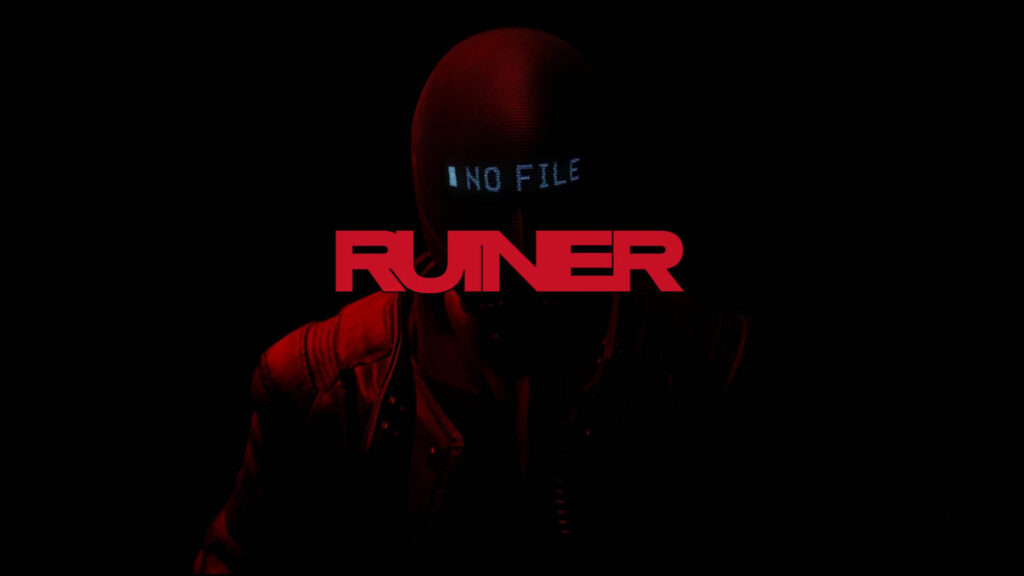
Ruiner
Developer: Reikon Games
Publisher: Devolver Digital
Platforms: PlayStation 4, Nintendo Switch, Xbox One, Microsoft Windows, Linux
Release Date: September 26, 2017
Players: 1
Price: $19.99
Ruiner is a overhead, twin-stick action game where players assume the role of a violent masked psychopath in a lurid, dystopian cyberpunk city. The unnamed protagonist is a mixture of the main character from the film Drive, and Jason Vorhees. He’s silent but effective killing machine, who has a cute waifu who talks to him and only him.
Rengkok City is an excellently realized vision of what most people think of when they hear the word cyberpunk. The architecture is retrofitted with generations of cables and antennas; paneling covered in graffiti making the world feel lived in.
Denizens are a varied mixture of punks, scum, cyborgs, bimbos, old psychics, and even cat girls. Ruiner has intense lighting, and garish neon lights that make surfaces glisten in the darkness. The splattered corpses left by the player leave shiny highlights that spackle across industrial signs written in Japanese.
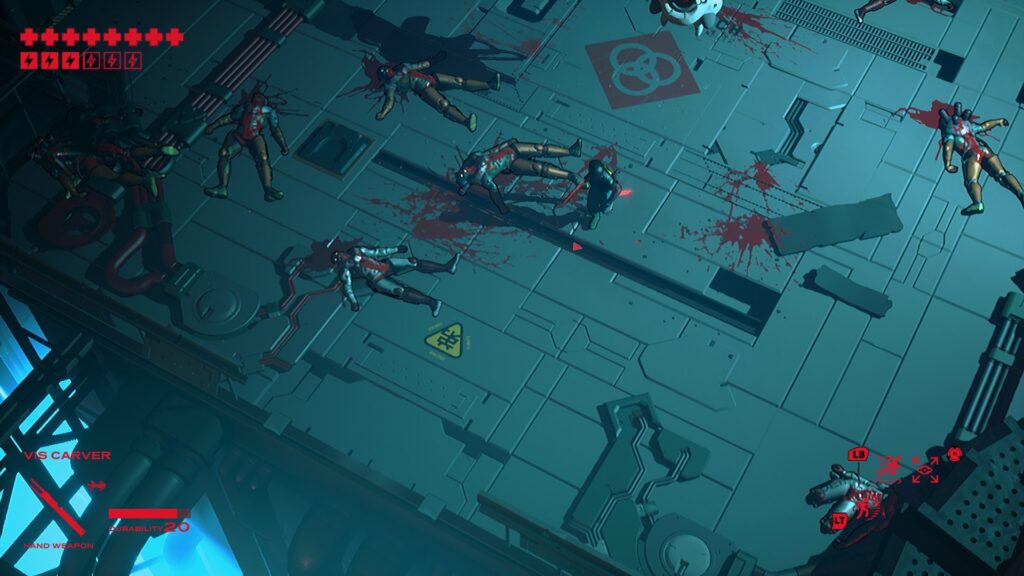
For a western developed game, Ruiner is deeply influenced by Asian cyberpunk media like Akira, Cyber City Oedo 808, and Ghost in the Shell. The various factories and labyrinthine compounds are festooned with esoteric mechanisms that are so advanced they defy understanding.
Ruiner looks as good as it plays. The protagonist carries a melee weapon and gun, can dash, and equip a variety of abilities. These abilities can range from mundane shields or grenades, to highly useful enemy hacking and slow-mo.
There are tons of cruel weapons that allow players to express some gnarly violence. Several types of katanas, clubs, and sledge hammers fill out the melee options.
Firearms range from flamethrowers and flying disc launchers, to many different kinds of shotguns and energy weapons. The weapons are all disposable, so the hero burns through these arms faster than a feminist stuffing her face at a Cracker Barrel.

Ruiner ranks high at realizing the potential of the look and feel of the cyberpunk ethos. Scenes are often bathed in intense colored lighting that reflect the emotional state of mind of the protagonist. The enemies range from cyborg ninjas, bounty hunters, punks, and corporate goons with dark shades. These are the prototypical cyberpunk fodder, and Ruiner renders them perfectly.
The music is as impressive as the visuals and violence. An eclectic mix of industrial techno with an interesting use of tribal rhythmic drumming that emphasizes the primitive and animalistic nature of humanity in the far future.
Ruiner may be the most pure form cyberpunk game that is widely available. It has versions for PlayStation 4, Xbox One, PC, and even Nintendo Switch for only $19.99. In case you missed it, you can find our review here, we can’t recommend it enough!
Image: Ruiner official website
There are tonnes of other titles we could recommend as well; Sense: A Cyberpunk Ghost Story (we recommend it), The Silver Case, its sequel The 25th Ward, and more- but we must end here.
If Cyberpunk 2077‘s ramshackle technical issues were too big of a disappointment, then consider any of these alternatives which will deliver authentic cyberpunk experiences across different genres and won’t cause seizures, data corruption, and are carefully optimized.
What are some of your favorite cyberpunk titles? Sound off in the comments below!